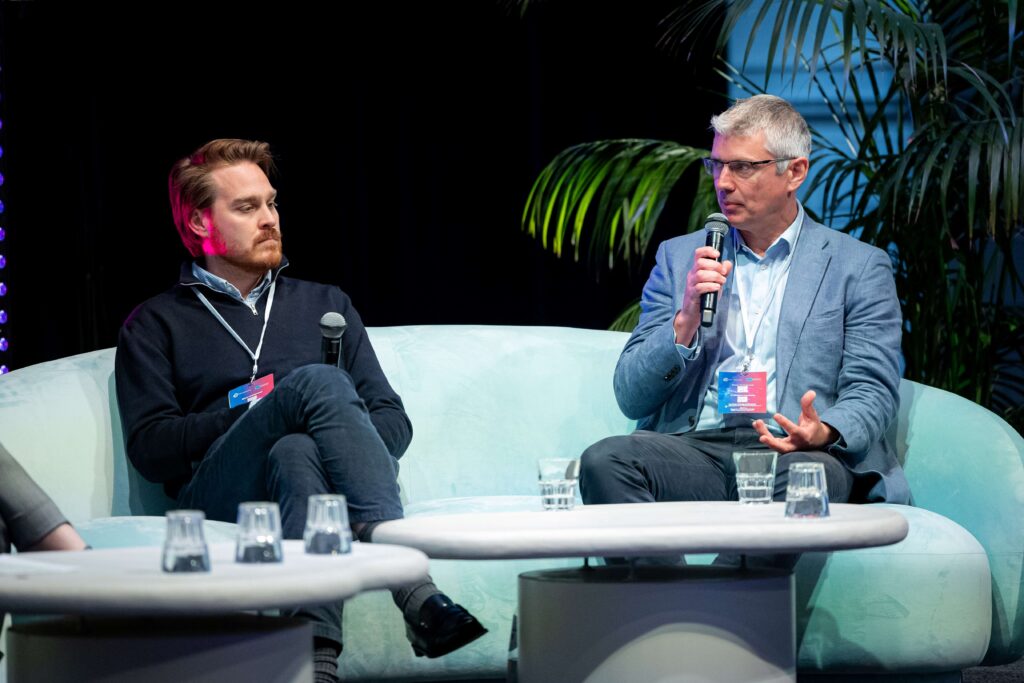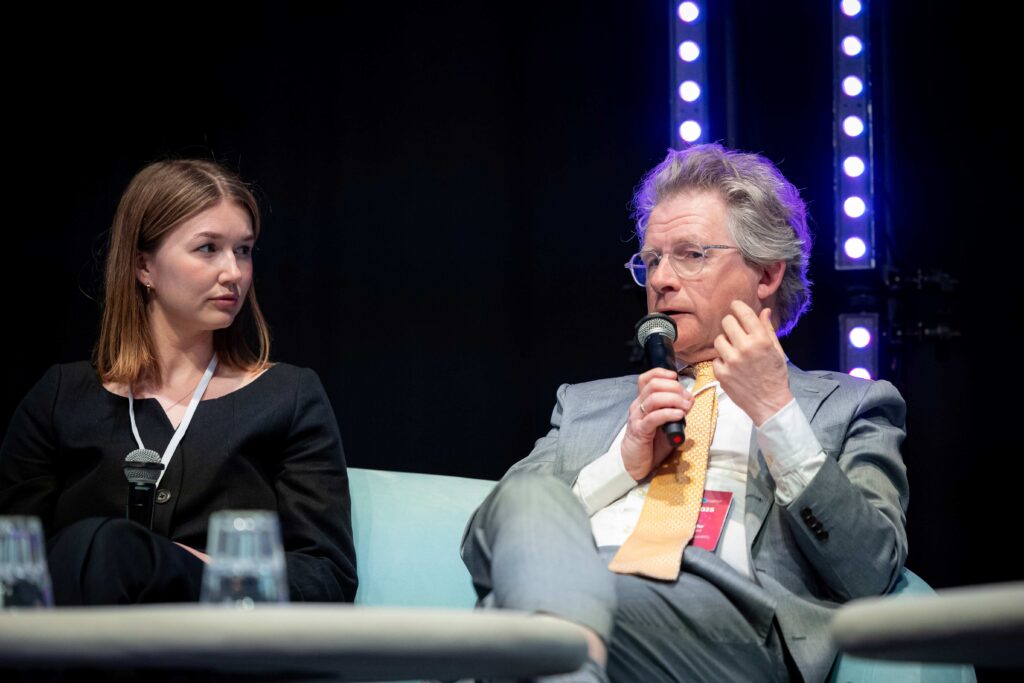Europe’s bet on startups requires higher risk appetite
Europe has a clear innovation paradox: it is a continent rich in scientific excellence and yet it lags behind in the commercialisation that fuels global competitiveness. Despite Europe’s vibrant academic research community, outstanding technical universities and deep industrial know-how, it struggles to provide an ecosystem for startups to scale up.
The ability to turn ideas into global market leaders remains constrained by critical challenges – chronic talent shortages, especially in digital, engineering and STEM fields, followed by red tape, fragmented regulatory frameworks and a lack of investment mechanisms for startups beyond the early growth stage.
Startups need capital and customers willing to develop products with them. Without those, the best ideas “stay stuck in the lab”.
Synne Sauar, CEO and Co-Founder of Litech
Kevin Lenehan, Director of Investments at EIT Manufacturing, reinforced the challenge during InnoHive 2025: “Manufacturing is an exciting and dynamic sector with strong potential for startups. Active support from leading European manufacturers is critical to bringing startups on the journey to market.”
The issue was not a lack of talent or ambition, but a systemic failure to bridge early innovation into scalable, competitive businesses. As Lenehan noted, European startups are constrained by the fragmentation of national ecosystems. This limits potential markets and so makes the investment case less compelling. A pan-European approach to developing strategic industries is essential.

Moderator Karin Helmstaedt, Synne Sauar, Michiel Scheffer, Andreas Schwarzenbrunner and Kevin Lenehan at InnoHive 2025. Photo credit (c) Xavier Lejeune
Why strategic investment matters
A central theme quickly emerged: investment is the fuel for innovation, competitiveness and growth. Without sufficient strategic investment, Europe risks falling further behind global competitors. But investment needs to be smarter, more targeted and more accessible. And those investing want less risk in putting their money into early-stage startups.
The money is here. Europe has the savings. What we lack is the framework to channel it into innovation.
Andreas Schwarzenbrunner, General Partner at Speedinvest, pointed to the structural differences between Europe and the United States
Unlike the United States, where policy reforms in the 1980s allowed pension funds and insurers to invest heavily in venture capital, Europe has remained overly cautious. As Michiel Scheffer, President of the European Innovation Council (EIC) Board, explained, “Every year, EUR 600 billion of European savings flows into the United States capital markets. Imagine if even 2% of that was redirected into European startups – that would mean an additional EUR 12 billion for innovation here at home.”
Schwarzenbrunner further stressed Scheffer’s statement, noting: “A lot of the money in US funds is European. We just need to invest it here.”
The panel underscored several obstacles that continue to stifle broader investment mentality in Europe.
Scheffer highlighted a cultural sticking point: “Europeans invest their savings in real estate, not in the real economy.”
The risk-averse behaviour mirrors a mindset that prioritises steady, short-term returns over the patient capital essential for scaling deep tech and industrial innovation. The implication is that Europe already has the financial firepower; what’s missing is the policy alignment and cultural confidence to deploy that capital at home.
But the policy alone is not enough.
The European institutions must encourage a pan-European approach to offer scaling opportunities and reduce barriers.
Kevin Lenehan, Director of Investments at EIT Manufacturing
This dynamic – where European capital fuels American innovation rather than Europe’s own industrial base – underscores the need for a strategic shift.
Europe must act swiftly to unlock its own financial potential. Without bold reforms, European startups will continue to face the “valley of death” – a term often used to describe the gap between early-stage funding and sustainable growth – and ambitious entrepreneurs will increasingly look to the United States or Asia to realise their visions.
Looking ahead, Europe can become a powerful force for innovation – if the right conditions are created. By reforming regulations, demonstrating the long-term value of high-growth sectors, like clean energy and recycling, and building specialised investment vehicles tailored to pension funds and private investments, Europe can unlock billions in capital. This shift could transform Europe from cautious bystanders to key enablers of the next generation of industrial champions.

Andreas Schwarzenbrunner and Kevin Lenehan at InnoHive 2025. Photo credit (c) Xavier Lejeune
Build a new investment culture
Yet, unlocking capital is not just about regulatory tweaks; it’s also about changing mindsets.
“Europe still asks startups when they will be profitable”, said Schwarzenbrunner, contrasting it with the US, where investors focus first on scale and impact. “Here, if a founder says they need a billion euros to build the next industrial champion, people look at them like they’re crazy.”
This risk aversion, born out of Europe’s more cautious financial culture, stifles ambition at exactly the moment boldness is needed. Moreover, investment should not be spread thinly across every possible sector. Instead, it must be strategically focused on areas where Europe has inherent strengths and long-term market potential – industries like energy, advanced materials, recycling and deep tech. They offer commercial promise and strategic autonomy in an increasingly volatile world.
“Strategic sovereignty isn’t only about defence”, Scheffer reminded the audience. “It’s about securing our energy, material and technological futures as well.”
The opportunity in crisis
Interestingly, the current global uncertainty – trade wars, supply chain fragilities, geopolitical tensions – was framed not only as a challenge but also as an opportunity.
If we get this right, Europe could become the best place in the world to live, work and build a business.
Andreas Schwarzenbrunner, General Partner at Speedinvest
Talent flows, Schwarzenbrunner suggested, are increasingly favouring Europe’s stability, quality of life and democratic values. Now is the time to turn that latent advantage into an investment boom.
Sauar agreed, adding, “We are in a crisis, but crises create urgency. They accelerate change. If Europe acts decisively now, it can avoid becoming just a museum of past greatness.”
We need to tell a better story about European innovation and back it with action.
Michiel Scheffer, President of the European Innovation Council (EIC) Board
For Europe to become the first and ultimate choice for startups to grow, a pan-European, digitally-first ecosystem is needed. The so-called ‘28th Regime’ or ‘EU Inc’ will help remove national barriers, which are often associated with additional administrative costs. Harmonising 27 markets will boost cross-border investment, increase access to talent and enable startups to operate seamlessly across member states.

Synne Sauar and Michel Scheffer at InnoHive 2025. Photo credit (c) Xavier Lejeune
A call for boldness
The discussions during InnoHive 2025 concluded: if Europe is to reignite its competitive edge, it must combine its scientific excellence with strategic investment, focused policy reforms and a willingness to dream bigger.
We shouldn’t complain. We should build. Europe is already a masterpiece – now it is time to create its next chapter.
Andreas Schwarzenbrunner, General Partner at Speedinvest

